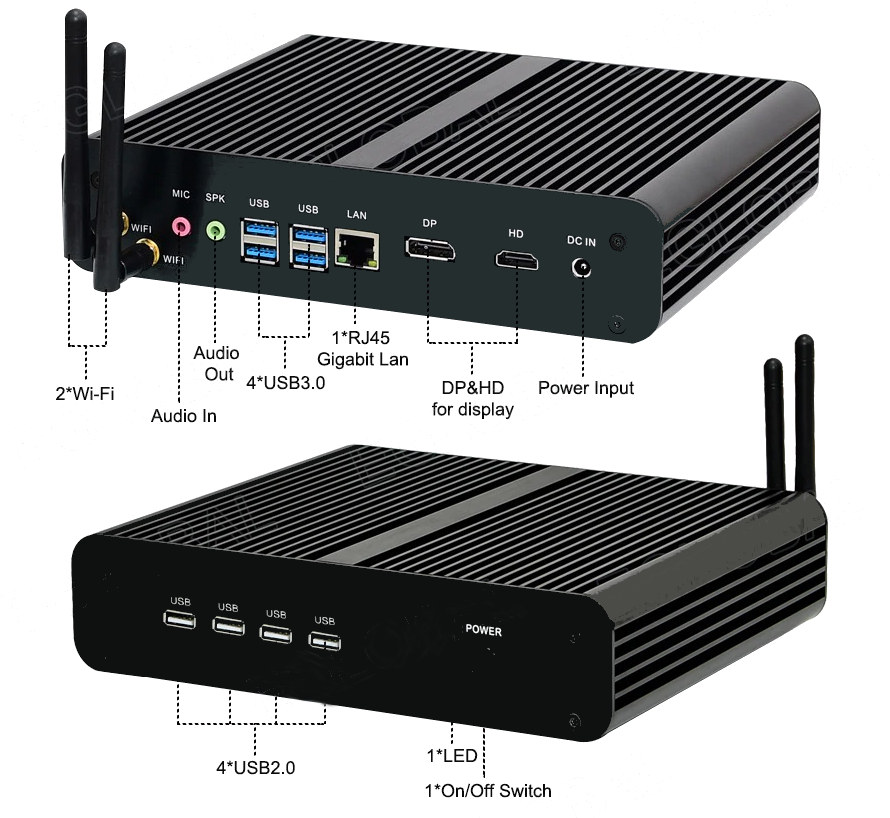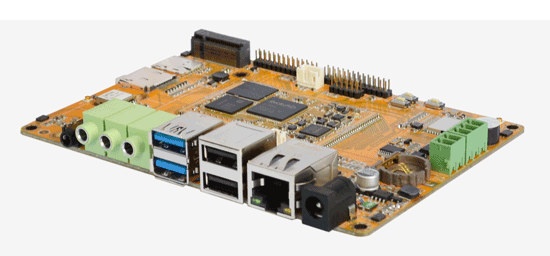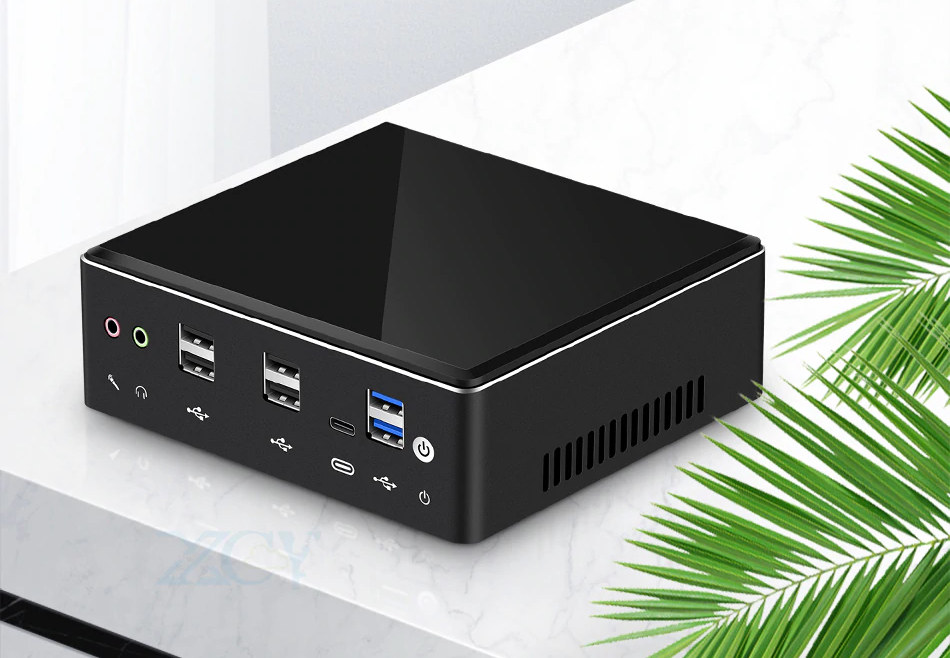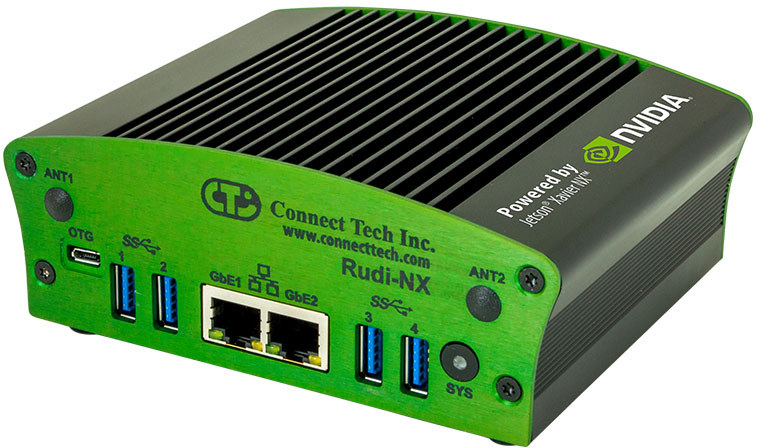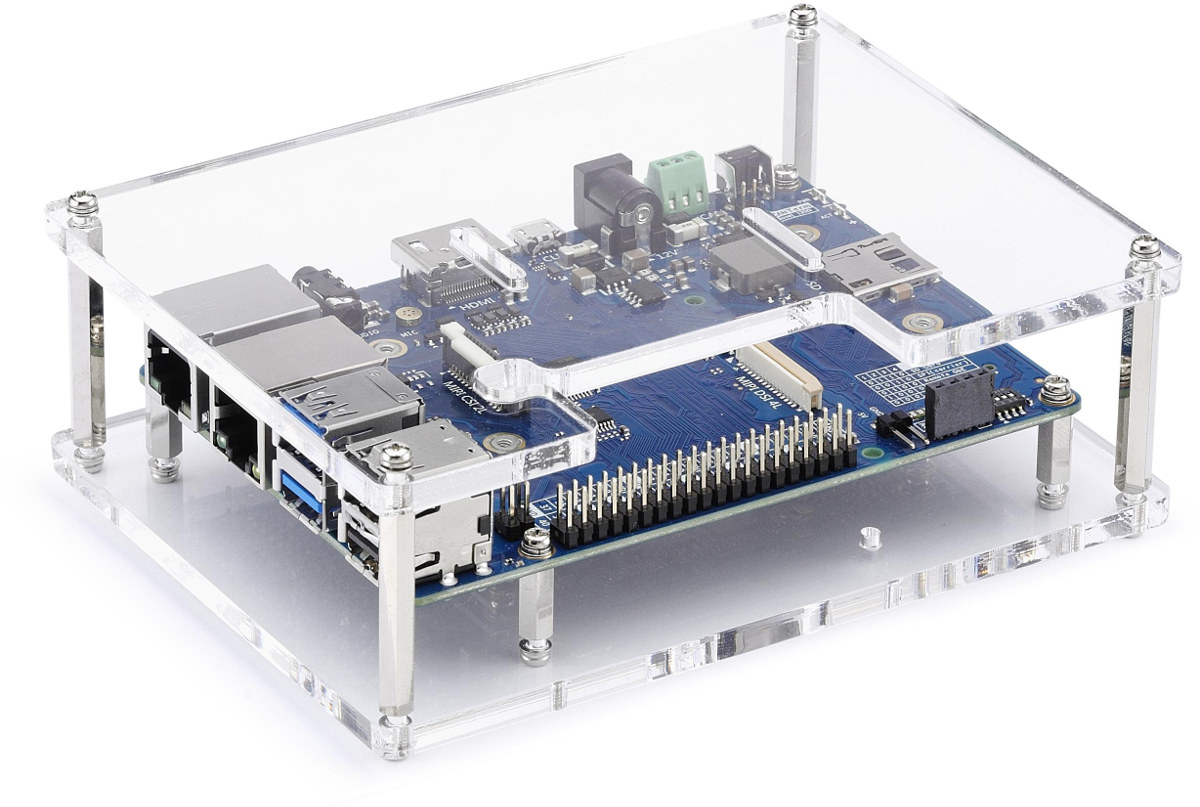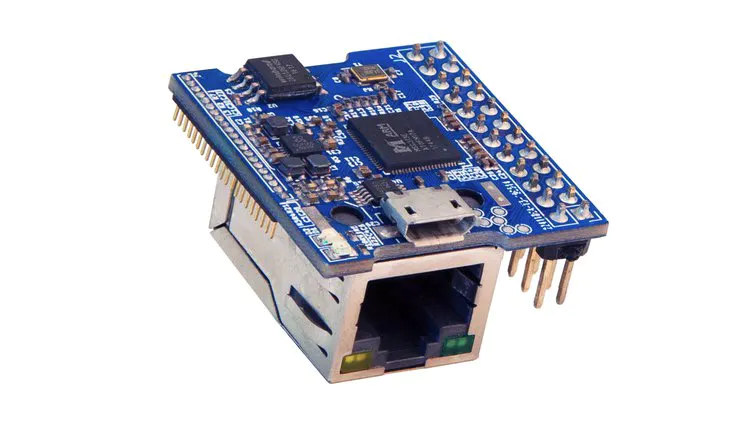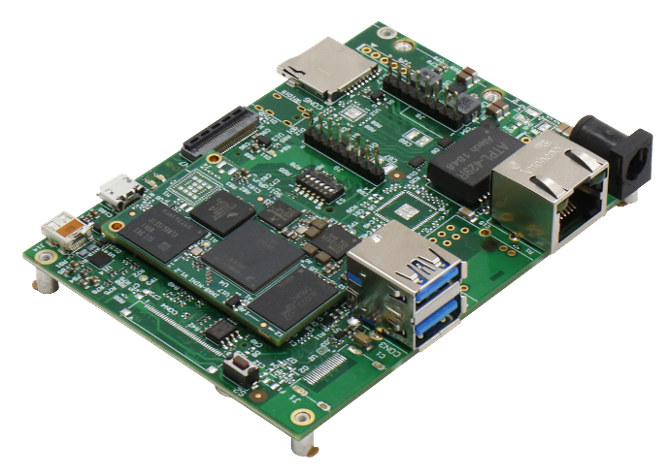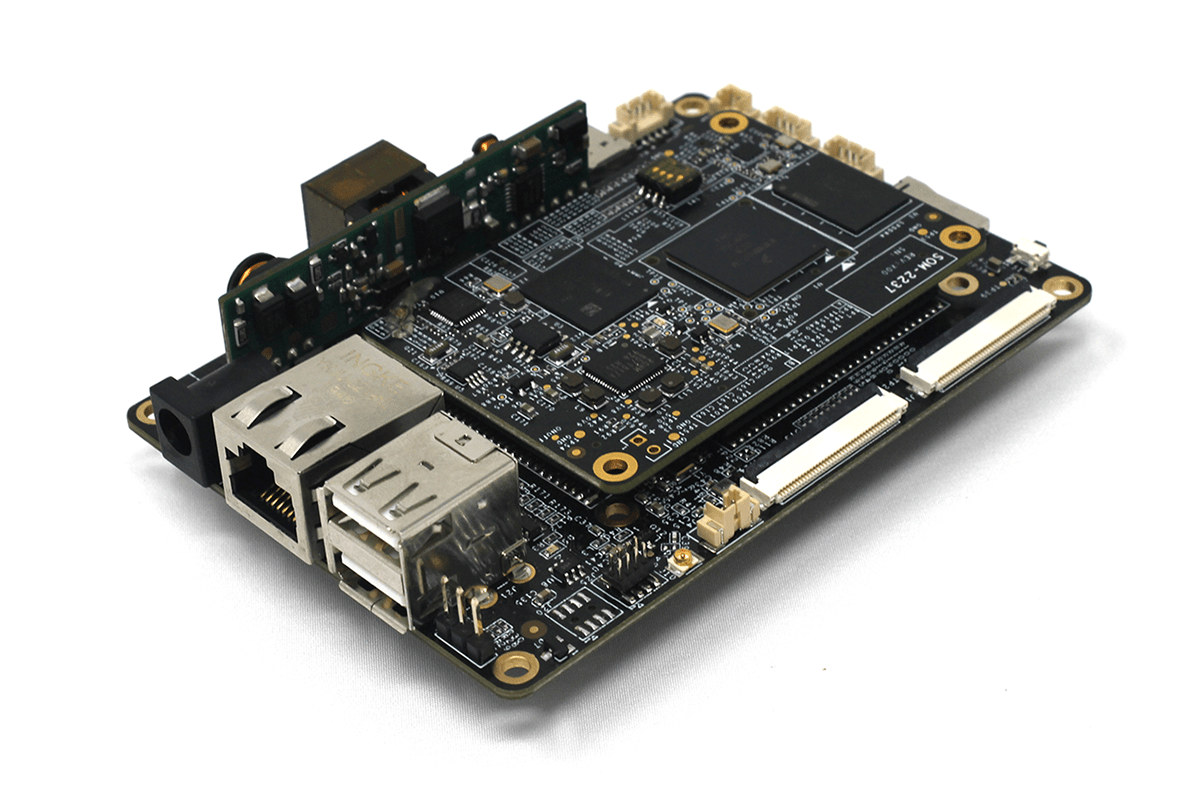Last week, we wrote about XCY X41 mini PC featuring a 10th generation Intel Core i7-10510U Comet Lake processor and cooled with an internal fan. We also pointed out there were other Comet Lake mini PCs on Aliexpress without looking into details yet. It was brought to our attention that Eglobal had a white-brand fanless Comet Lake mini PC equipped with the same Intel Core i7-10510U quad-core processor or a more powerful Core i7-10710U hexa-core processor. Eglobal “Noname” mini PC specifications: SoC (one or the other – 10th Gen SoCs shown only) Intel Core i7-10510U quad-core/octa-thread Comet Lake-U processor @ 1.10 GHz / 4.70GHz (Turbo single core) with 8MB cache, 24 EU Intel UHD Graphics 620; 15W TDP (TDP up: 25 W / TDP down: 10 W) Intel Core i7-10710U hexa-core/deca-thread Comet Lake-U processor @ 1.80 GHz / 4.90GHz (Turbo single core) with 12MB cache, 24 EU Intel UHD Graphics […]
Boardcon RK1808 SBC Targets Smart Audio & Computer Vision Applications
Rockchip RK1808 neural network processing unit was initially an IP Block inside RK3399Pro, but the company eventually launched RK1808 Cortex-A35 processor as a standalone solution now providing up to 3.0 TOPS for AI inferencing in modules, USB sticks, and development kits. Boardcon offers another option with EM1808, a Rockchip RK1808 SBC equipped with the processor. The board should be suitable for two main types of AI applications, namely smart audio applications thanks to four audio ports, speaker header, & an onboard 4-mic array, and computer vision with MIPI CSI & DSI interfaces. Boardcon EM1808 board is comprised of a baseboard and CPU module with the following overall specifications: SoC – Rockchip RK1808 dual Cortex-A35 processor up to 1.6GHz with 3.0 TOPS (for INT8) NPU, VPU supporting H.264 1080p60 decode, 1080p30 encode System Memory- 2GB LPDDR3 Storage – 8GB eMMC flash, MicroSD slot, M.2 NVMe SSD interface Display I/F – 26-pin […]
XCY X41 Mini PC Is Powered by an Intel Core i7-10510U Comet Lake Processor
Released in August 2019, Intel’s 10th generation Comet Lake-Y and U-Series processors have been found in several laptops, but there have been less Comet Lake mini PC‘s announced with the new processors. XCY X41 barebone mini PC has been around for a while with Intel’s 6th Gen to 8th Gen processor but has recently been upgraded with a variant featuring the 15W Intel Core i7-10510U 10th Gen Comet Lake processor. XCY X41 mini PC (Comet Lake version) specifications: SoC – Intel Core i7-10510U quad-core/octa-thread Comet Lake-U processor @ 1.80 GHz / 4.90GHz (Turbo) with 8MB cache, 24 EU Intel UHD Graphics 620; 15W TDP (TDP up: 25 W / TDP down: 10 W) System Memory – 2x 260-pin SO-DIMM slot for up to 32GB DDR4 2400/2666MHz Storage – M.2 2280 socket for NVME SSD, SD card slot Video Output 1x HDMI up to 4096×2304 @ 24Hz 1x DisplayPport up to […]
NVIDIA Jetson Xavier NX SoM Launched for $459, Third-Party Carrier Boards & Edge Computers Available
NVIDIA announced the Jetson Xavier NX system-on-module last November with an NVIDIA Xavier SOC with 6 NVIDIA Carmel Arm v8.2 cores, a 384-core NVIDIA Volta GPU and two NVDLA deep learning accelerators for a combined 21 TOPS at 15 Watts. The 69.6 x 45 mm module also includes 8 GB LPDDR4x RAM and a 16GB eMMC flash with a 260-pin SO-DIMM providing various I/Os from PCIe to MIPI CSI and display interfaces such as HDMI and eDP. NVIDIA expected the module to be “available in March for $399 to companies looking to create high-volume production edge systems”, and at the time I thought it would be hard to purchase for simple mortals, but the company just sent an email announcing the launch of the module and it’s now listed for $459 on Arrow Electronics with no stock and a 16 weeks lead time. While there’s no Jetson Xavier NX development […]
ADLink Launches Vizi-AI Development Starter Kit for Industrial Machine Vision & Artificial Intelligence
ADLINK has recently launched Vizi-AI development starter kit for industrial machine vision and artificial intelligence (AI) at the edge in collaboration with Intel and Arrow Electronics. Vizi-AI is comprised of a carrier board that looks to be the same as used in the company’s I-Pi SMARC development kit equipped with an Intel Movidius Myriad X VPU and combined with LEC-AL Intel Atom Apollo Lake SMARC computer module. Vizi-AI SBC Let’s have a look at the hardware features and specifications of Vizi-AI SBC (aka VIZI-AI LEC-AL-E3940-AI-4G-32G): SoC – Intel Atom x5-E3940 quad-core Apollo Lake-I processor @ up to 1.6 / 1.8 GHz (Turbo) with 12EU Intel HD Graphics 500; 9.5W TDP System Memory – 4GB LPDDR4 (Option up to 8GB) Storage – 1x MicroSD card slot AI Accelerator – Intel Movidius Myriad-X VPU (Vision Processing Unit) Video – 1x HDMI port, single-channel LVDS/eDP interface via flat cable Audio – On-carrier audio […]
BreadBee is a Tiny Embedded Linux SBC based on MStar MSC313E Camera SoC (Crowdfunding)
There are plenty of tiny and compact Arm Linux SBC on the market from NanoPi NEO to Raspberry Pi Zero or Rock Pi S. But Daniel Palmer has been able to design an even smaller board – BreadBee – based on MStar MSC313E Cortex-A7 SoC since the processor also embeds 64MB RAM, or enough to run embedded Linux.BreadBee specifications: SoC – MStar MSC313E Arm Cortex-A7 processor @ ~1.0 GHz with NEON, FPU, 64MB DDR2 Storage – 16MB SPI NOR flash Networking – 10/100M Ethernet (RJ45) USB – 1x Micro USB 2.0 port Expansion 24-pin dual-row header (2.54mm pitch) with SPI, I2C, 4x 10-bit ADC, 3x UART, GPIOs 21-pin header (1.27mm pitch) with SD/SDIO, USB 2.0, GPIOs Misc – RTC, Watchdog timer Power Supply – 5V via micro USB port Dimensions – 32 x 30mm Despite MStar MSC313E being a camera processor, the camera interface does not seem exposed in the […]
HummingBoard Ripple SBC Targets AI Applications with NXP i.MX 8M Mini SoC & Gyrfalcon Lightspeeur 2803S NPU
SoliRun has made good use of its i.MX 8M Mini SoM which – as its name does not imply – comes with both an NXP i.MX 8M Mini processor and Gyrfalcon Lightspeeur 2803S AI accelerator, and can now be found in HummingBoard Ripple SBC part of the new HummingBoard-M family and based on a cost-reduced version of HummingBoard Pulse baseboard which we covered in 2018. Note that HummingBoard Ripple board is also available with the earlier SoliRun i.MX 8M module, and comes with up to 4GB RAM, Gigabit Ethernet, USB 3.0, Micro HDMI. Compared to HummingBoard Pulse SBC, it does without MIPI-DSI nor digital audio, and removing one Gigabit Ethernet port, and one MIPI-CSI connector. HummingBoard Ripple SBC specifications: SOM Model NXP i.MX8M dual-/quad-core Arm Cortex A53 processor up to 1.5GHz with Arm M4 MCU core NXP i.MX8M Mini single to quad-core Arm Cortex A53 processor up to 1.8GHz with […]
NXP i.MX 8M Mini Pico-ITX SBC Comes with Audio DSP, Optional PoE and Google Coral M.2 Module
We’ve covered several NXP i.MX 8M Mini SBC‘s since the announcement of the processor in 2018 as the first i.MX SoC manufactured with a 14nm process allowing for a higher CPU clock of 2.0 GHz compared to the 1.5 GHz frequency used with the original i.MX 8M processor. i.MX 8M Mini also removes some features (4K video playback, some video interfaces, …) in order to lower the cost of the processor. Companies are still releasing new i.MX 8M SBCs regularly, but we don’t always cover them all since many often do not offer much compared to the competition. But Estone Technology EMB-2237-AI Pico-ITX SBC has some unusual features and options including a Cirrus Logic audio DSP, as well as support for a PoE module and Google Coral M.2 AI accelerator module. EMB-2237-AI SBC is comprised of a system-on-module and baseboard with the following specifications: Estone SOM-2237 module SoC – […]

